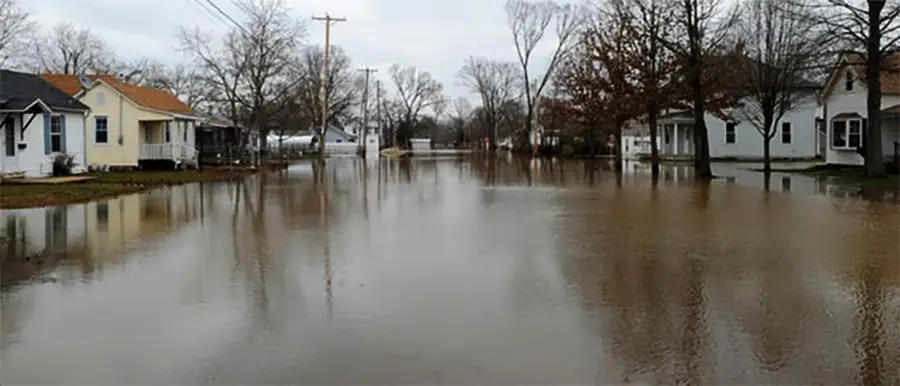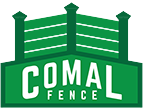
Table of Contents
When unexpected heavy rain hits San Antonio and the surrounding Hill Country, yards flood quickly — and your fence is often the first thing to take the hit. While many homeowners focus on the immediate water cleanup inside, fences quietly suffer outside, leading to costly repairs or replacements later on.
At Comal Fence, we understand how stressful this can feel. As a local business rooted in the San Antonio and Comal County community, we want to help you protect your investment and keep your home secure and beautiful.
Why Flooding is Tough on Fences
Floodwaters bring more than just standing water. They often carry debris, mud, and chemicals that can weaken wood, corrode metal, and shift posts. After a heavy rain or flood event, your fence might look fine on the surface — but hidden issues can cause future failures.
Key risks include:
Wood rot from prolonged moisture exposure
Rust and corrosion on metal fences and fasteners
Shifting or leaning posts from softened soil
Soil erosion around posts, compromising structural stability
🔗 Learn more about our wood fence options and protective treatments »
Step 1: Perform a Safety Check First
Before you get close to your fence, make sure the surrounding area is safe:
Watch for standing water and hidden holes.
Be cautious of insects or small animals displaced by flooding.
Avoid touching electrical components like gate motors until inspected by a professional.
If your fence includes electrical access systems (like automatic gates), do not attempt to operate or test them before confirming they’re dry and safe.
Step 2: Inspect for Visible Damage
Carefully walk along your fence line and look for:
Warped or swollen boards on wood fences
Rust spots or peeling paint on metal fences
Leaning or shifted posts, indicating foundation movement
Loose or missing fasteners
Debris lodged against the fence, which can create extra pressure
Take photos of any damage for your records and for possible insurance claims.
Step 3: Clear Away Debris
Floods often leave behind branches, leaves, and other debris piled against your fence. Removing these quickly helps reduce moisture buildup and prevents further structural strain.
Use gloves to avoid injury.
Check under heavy debris for hidden damage or pests.
Avoid using heavy tools that could accidentally scrape or damage fence panels.
Step 4: Improve Drainage Around Your Fence
Flood damage often exposes existing drainage issues:
Clear nearby drains and gutters to prevent water from pooling near your fence line.
Check grading: Your yard should slope slightly away from the fence to move water out.
Install gravel or drainage rock at the base to help reduce future standing water.
Good drainage is one of the most effective long-term ways to protect your fence from repeated flood events.
Learn about proper yard drainage from Texas A&M AgriLife Extension
Step 5: Check for Hidden Damage
Some problems aren’t immediately visible. In the days following a flood:
Recheck wood panels for signs of rot or mold as they dry.
Inspect metal fences for deep rust that might appear after moisture evaporates.
Test posts by gently shaking them to check stability.
Look for gaps or heaving in the soil around the posts.
Early detection makes repairs easier and prevents safety hazards.
Step 6: Plan Repairs or Reinforcements
If you notice any structural damage, don’t wait to repair it. Small cracks or loose boards can become bigger issues quickly.
At Comal Fence, we offer:
Post straightening and reset
Board and panel replacement
Rust removal and repainting
Full fence replacements when necessary
Proactive Protection Tips for Future Floods
While you can’t control Texas weather, you can take steps to prepare:
Stain or seal wood fences regularly to prevent water absorption.
Paint or treat metal fences to stop corrosion.
Install taller bottom gaps for fences in flood-prone yards, allowing water to flow through instead of pushing against panels.
Reinforce posts in flood-prone areas with concrete footings or gravel bases.
🔗 See our guide: Best Protective Treatments for Wood Fences »
We’re Here to Help San Antonio Homeowners Recover
At Comal Fence, we know your fence isn’t just a boundary — it’s part of what makes your home safe and welcoming. After a storm or flood, it can feel overwhelming to figure out what needs to be done next. That’s why our team is always ready to guide you through repairs, maintenance, or full replacements with care and local expertise.
Get Expert Fence Help Today
Need help inspecting your fence after heavy rain? We’re proud to serve homeowners across San Antonio, New Braunfels, Canyon Lake, and the surrounding areas.
Request a Free Inspection Today »
Or call us at (210) 686-3932 today to get started.
